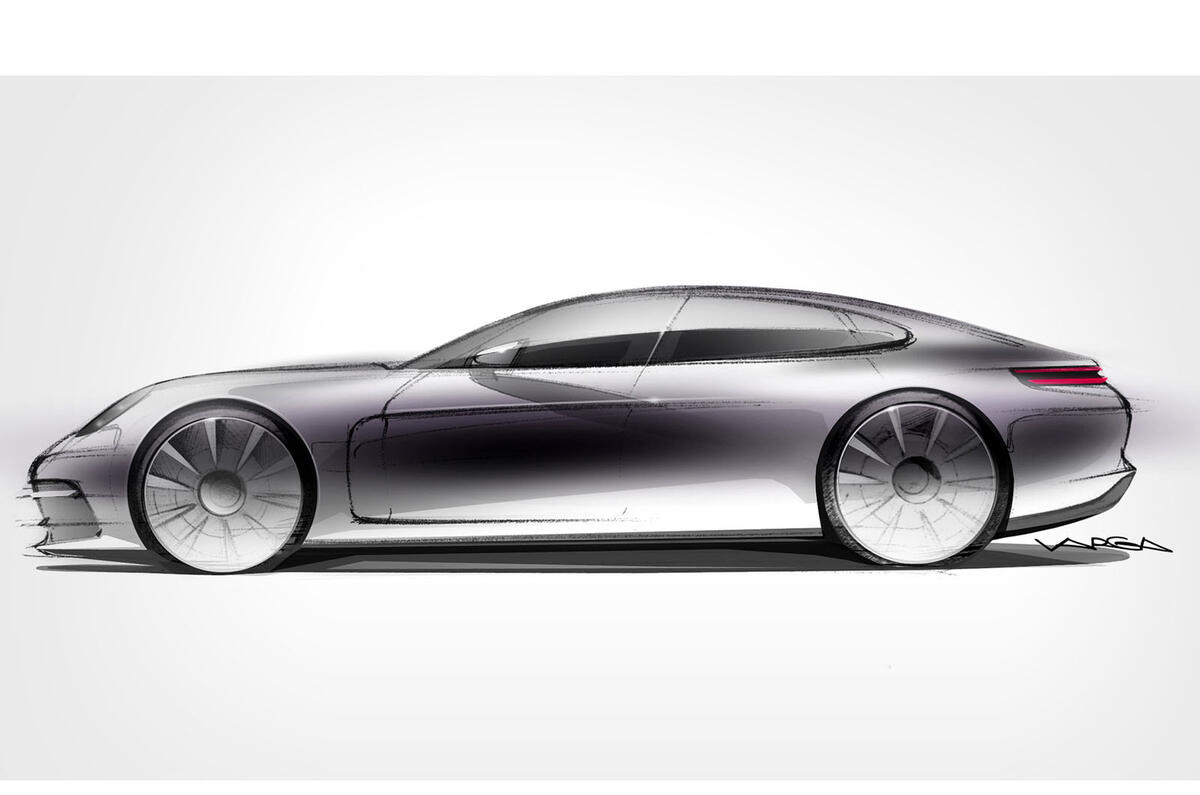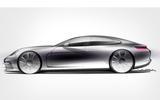The next-generation Porsche Panamera has been teased again, this time in a sketch, ahead of its reveal later this month.
The 2016 Porsche Panamera has been revealed
The car will be unveiled at an event in Berlin before going on display at the Paris motor show in September.
Previous spy pictures had shown the car in almost completely undisguised form, with mock light clusters its only camouflage, and before the sketch was released the luxury car was teased in a promotional video.
The spy pictures show that the new design draws heavily from the new 718 Boxster, with a similar front spoiler and air intake treatment. The profile of the new Panamera is also sleeker than that of its predecessor.
The car looks almost production ready in recent shots, which show it being subjected to high-speed testing at the Nürburgring nearly camouflage-free.
We've sampled the next-gen Panamera from the passenger seat. Read about our ride here.
Previous spy shots revealed the upcoming car's interior, which has a brand new centre console. This indicates that Porsche may be looking to update the cabin architecture of its saloon. New wooden-clad surfaces can be seen in these pictures, complete with a new, larger gear lever.
2017 Porsche Panamera Shooting Brake targets Mercedes CLS
Based on a new, advanced rear and all-wheel-drive platform called MSB, the Panamera will incorporate multiple weight-saving measures and an all-new range of V6 and V8 petrol engines, which should give a muscular power delivery.
A hybrid version was also been spotted testing last year, with the small 'hybrid' sticker in the right-hand front window the only visible difference between it and conventionally powered models.
The template for the new Panamera is based on the technical and design advances introduced on the latest 991 series of the Porsche 911, which incorporates six different material types, including magnesium, multi-phase steels and aluminium skin panels.
These new materials helped to reduce the kerb weight of 911 models by up to 45kg, despite a significant increase in the car’s overall dimensions, more stringent crash test standards and a higher level of standard equipment.














































































































Join the debate
Add your comment
@ NBR CGT Times
Carbon fiber era: What else is there for the foreseeable future?
/Cheers
Better looking than the current model
Huge improvement